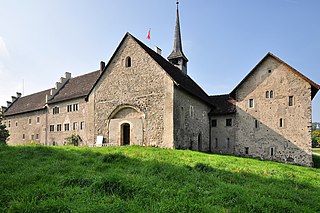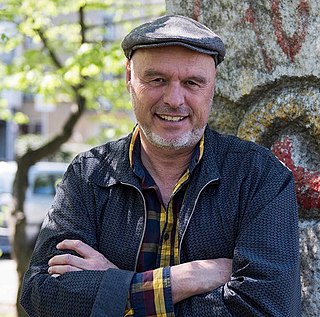
Aargau, more formally the Canton of Aargau, is one of the 26 cantons forming the Swiss Confederation. It is composed of eleven districts and its capital is Aarau.

Johann Heinrich Daniel Zschokke was a German, later Swiss, author and reformer. Most of his life was spent, and most of his reputation earned, in Switzerland. He had an extensive civil service career, and wrote histories, fiction and other works which were widely known.

Meyer Kayserling was a German rabbi and historian.

Arnold Stadler is a German writer, essayist and translator.

Max Bense was a German philosopher, writer, and publicist, known for his work in philosophy of science, logic, aesthetics, and semiotics. His thoughts combine natural sciences, art, and philosophy under a collective perspective and follow a definition of reality, which – under the term existential rationalism – is able to remove the separation between humanities and natural sciences.

The Neo-Renaissance style Grand Hotel Hotel Waldhaus Vulpera with Sgraffito-Elements was one of the first addresses in the Swiss Alps and was a major Belle Époque monument in Europe. With its 270 beds it was the largest hotel in Scuol-Tarasp-Vulpera and was one of the most important new hotel buildings in the 19th century and is thus a piece of architectural history.

The Counts of Lenzburg were a comital family in the Duchy of Swabia in the 11th and 12th centuries, controlling substantial portions of the pagi of Aargau and Zürichgau.

Peter Mieg was a Swiss composer, painter and journalist.

Brugg AG railway station serves the municipality of Brugg, in the canton of Aargau, Switzerland. Opened in 1856, it is owned and operated by Swiss Federal Railways.
Conrad Brunner was a Swiss Benedictine monk. From 1380 until his death, he was abbot of the monastery at Muri in today's Canton of Aargau.

Thomas Maissen is a professor of modern history at Heidelberg University and co-director of the Cluster of Excellence "Asia and Europe in a Global Context". As of September 2013 he is detached as director of the German Historical Institute in Paris.

Roger Sablonier was a Swiss historian and writer of non-fiction publications, and Emeritus of the faculty of the University of Zürich.
Heinrich Rombach was a German philosopher and professor of philosophy at the University of Würzburg. He is known for developing structural ontology.

Bubikon Castle or Bubikon Commandery is a castle in the municipality of Bubikon of the Swiss Canton of Zürich. The former Commandery, a medieval monastery of the Knights Hospitaller, is a Swiss heritage site of national significance.

Surbtal is a river valley region in the Canton of Aargau, Switzerland.

Heinz Nigg is a Swiss anthropologist, community artist, and promoter of participatory video. In 1980 he documented the outbreak of the youth riots in Zurich.
Wolfgang Kermer is a German art historian, artist, art educator, author, editor, curator of exhibitions, art collector and professor. From 1971 to 1984 he was repeatedly elected Rector of the State Academy of Fine Arts Stuttgart and thus the first scientific and at the same time youngest teacher in this position in the history of the university. Under his rectorate, the State Academy of Fine Arts Stuttgart was reformed in 1975 and 1978 on the base of two new university laws of the State of Baden-Württemberg and thus, for the first time in its history, authorized to set up diplomas for all courses. One of the accents of his work was the promotion of talented graduates of the academy: In 1978 he organized the first of the so-called ″debutant exhibitions″, an ″unconventional contribution to the promotion of young people″, supported financially by the State of Baden-Württemberg.
Michael Schneider is a Swiss composer and musicologist. He is active as a music and culture journalist as well as manager.
Markus Bundi is a Swiss writer.

The Aargauer Literaturhaus is a cultural institution in Lenzburg dedicated to the popularization of literature and literary practices. It carries out author talks, reading conferences, and literary workshops for all ages on a regular basis. Established in 2004, it is located in the city's cultural center, the Müllerhaus, an architectural monument of the 18th century and one of the most important cultural assets in Lenzburg.















